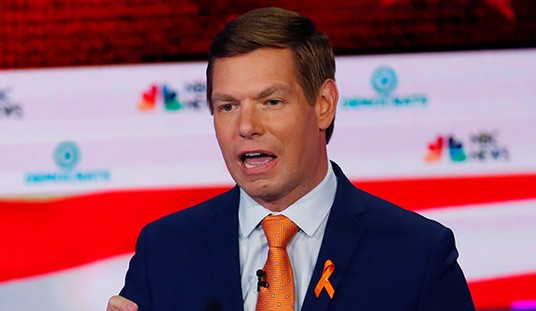The subject of this article is transgenderism, the advocacy for and encouragement of individuals changing genders. It is not about individuals who have engaged, to one degree or other, in changing genders. These are our follow citizens and fellow community members, who should have the same rights, and are due the same consideration, as all of our fellow citizens and community members.
Transgenderism is said to be a response to gender dysphoria, which the American Psychiatric Association defines as follows:
Gender dysphoria involves a conflict between a person’s physical or assigned gender and the gender with which he/she/they identify. People with gender dysphoria may be very uncomfortable with the gender they were assigned, sometimes described as being uncomfortable with their body (particularly developments during puberty) or being uncomfortable with the expected roles of their assigned gender.
The APA regards gender dysphoria as a mental disorder, discussing diagnosis and treatment. The APA guidelines on treatment are as follows:
Treatment options for gender dysphoria include counseling, cross-sex hormones, puberty suppression and gender reassignment surgery. Some adults may have a strong desire to be of a different gender and to be treated as a different gender without seeking medical treatment or altering their body. They may only want support to feel comfortable in their gender identity. Others may want more extensive treatment including hormone treatment and gender reassignment surgery leading to a transition to the opposite sex. Some may choose hormone treatment or surgery alone.
The discussion of gender dysphoria usually treats it as a unique case human discomfort, often recommending radical measures for correction. But perhaps gender dysphoria should be considered with the context of the wide range of dysphoria experienced by people, such as body dysphoria. For example, the Anxiety and Depression Association of America defines it as follows:
People who have body dysmorphic disorder (BDD) think about their real or perceived flaws for hours each day. They can’t control their negative thoughts and don’t believe people who tell them that they look fine. Their thoughts may cause severe emotional distress and interfere with their daily functioning. They may miss work or school, avoid social situations and isolate themselves, even from family and friends, because they fear others will notice their flaws.
The ADAA recognizes that BDD is just an extreme expression of a widely experienced discontent: “Most of us have something we don’t like about our appearance — a crooked nose, an uneven smile, or eyes that are too large or too small. And though we may fret about our imperfections, they don’t interfere with our daily lives.”
Psychiatric, psychological, and therapeutic professions like to identify official “disorders” that they can then treat. And, of course, there are some people in acute distress and dysfunction, who need treatment. But most people fall along a long continuum, with many grades of discomfort. Therefore, some caution should be taken in diagnosing and treating to ensure that people’s discomforts are not reified into syndromes, conditions, and illnesses by overenthusiastic professional and politically motivated activists. It was not long ago that psychologists and psychiatrists regarded homosexuality as a mental disease.
Another dysphoria coming into prominence is age dysphoria — discomfort with one’s chronological age. Age dysphoria has already shown up in a court petition for a change of birthday. A Dutch man in relatively youthful physical shape, confirmed by his doctor, was very unhappy with his chronological age of 69, and petitioned for his birthday to be changed to 20 years younger so he would be more attractive to women. Bio-ethicist Joona Räsänen from the University of Oslo, in her article “A Moral Case for Legal Age Change” in The Journal of Medical Ethics, argues that there are three scenarios in which a person should be allowed to legally change his or her age:
When the person in question “genuinely feels his age differs significantly from his chronological age,” when “the person’s biological age is recognized to be significantly different from his chronological age,” and when “age change would likely prevent, stop, or reduce ageism” that “he would otherwise face.”
A final example, although I am sure there are more, is race dysphoria — discomfort about one’s race. Historically, some blacks would “pass” for white, thus gaining higher racial status. Today with the strong anti-white messages in academia and the mainstream media, some people are not happy being white. The basic premise of “social justice” academia today is that whites are all racist and oppress all people of color. It is thus no wonder that today some whites suffer from racial dysphoria. Take Senator Elizabeth Warren, who officially stated that she was Native American Indian, more specifically Cherokee, a declaration that aided her educational and political mobility. Another example is Rachel Dolezal, who was president of the Spokane chapter of the National Association for the Advancement of Colored People. Although her parents are white, she insists that “I identify as black.”
She said published accounts described her first as “transracial,” then “biracial,” then as “a black woman.” “I never corrected that,” she conceded, adding that “it’s more complex than being true or false in that particular instance.” [Emphasis added.]
Racial dysphoria thus joins age, body, and gender dysphoria as an example of discomfort with one’s condition, and identity as the legitimizing factor that justifies claiming to be something else.
One issue that has arisen in dysphoria and identity claims, is what is the obligation of the public, of other people, and governments to recognize these claims? In recent times transracialism has been rejected in highly publicized cases. Senator Warren has been taken to the woodshed by American Indians. Rachel Dolezal was forced to resign as president of the NAACP chapter.
Dolezal’s career as a civil rights activist in the Pacific Northwest crumbled in the past few days. She resigned Monday as president of the Spokane, Washington, branch of the NAACP, lost her position as a part-time African studies instructor at a local university, was fired as a freelance newspaper columnist and is being investigated by city Ethics Commission over whether she lied about her race on her application when she landed an appointment to Spokane’s police oversight board.
Emile Ratelbrand had no better luck with his age dysphoria:
A Dutch district court refused his request on Monday, saying it did not find any reason in his arguments for a change in policy. The key reason why the court said no to Ratelband’s request is because aging comes with special rights and privileges, like a requirement to attend school, and a right to vote. If Mr. Ratelband’s request was allowed, those age requirements would become meaningless,” the court said in a written statement on its website.
In these cases, the identity claimed was imaginary and not in accord with the facts. But there is a question of whether identity claims even if factual must be validated by others. There are many individuals who hold appointments as “professor” in a higher education institution. Does that oblige members of the public to address them as “professor” or the government to legally require people to address them as professor? Clearly not, although some people may use the term of address as a courtesy. In the cases where identity claims do not accord with the facts, such as transracial identities, are other people obliged to accept the claimed identity, and the government obliged to enforce public acceptance of the identity? Clearly not. If people with body dysphoria claim to be physically hideous, are others and government laws obliged to validate that? Clearly not.
But in regard to gender identity claims, there is great pressure for the public to call a transgender individual what that person wishes to be called, which might be a newly invented pronoun. Laws have been enacted that directly or indirectly threaten members of the public if they do not conform in their speech to transgender preferences. Canadian bill C-16 is explained by the Minister of Justice as follows:
This enactment amends the Canadian Human Rights Act to add gender identity and gender expression to the list of prohibited grounds of discrimination. The enactment also amends the Criminal Code to extend the protection against hate propaganda set out in that Act to any section of the public that is distinguished by gender identity or expression and to clearly set out that evidence that an offence was motivated by bias, prejudice or hate based on gender identity or expression constitutes an aggravating circumstance that a court must take into consideration when it imposes a sentence.
Some observers see this bill as mandating identifying preferred pronouns, and penalizing as discrimination and hate speech any usage not dictated by transgender individuals and activists.
Other observers claim that not using preferred pronouns would not rise to the level of a crime.
However, anyone familiar with the suppression of free speech by the Canadian Human Rights Commissions and Tribunals will have no confidence in the reasonable application of C-16. While the speech-suppressing Section 13 of Canadian National Human Rights Commission mandate was removed after a public controversy, the Provincial Human Rights Commissions maintain the tainted section, and continue to attack speech, for example the Alberta Human Rights Act, Section 3(1)b.
Not using preferred pronouns and names is clearly against the law in New York City. According to New York City Commission on Human Rights Legal Enforcement Guidance on Discrimination on the Basis of Gender Identity or Expression: Local Law No. 3 (2002); N.Y.C. Admin. Code § 8-102(23):
1. Failing To Use the Name or Pronouns with Which a Person Self-Identifies
The NYCHRL requires employers and covered entities to use the name, pronouns, and title (e.g., Ms./Mrs./Mx.)15 with which a person self-identifies, regardless of the person’s sex assigned at birth, anatomy, gender, medical history, appearance, or the sex indicated on the person’s identification. All people, including employees, tenants, customers, and participants in programs, have the right to use and have others use their name and pronouns. [Emphasis in text added.]
Penalties for violation can lead to fines up to $250,000. This is a remarkable special privilege extended to people who identify as a different gender, which other citizens have not been granted. And the converse of speech being dictated is that free speech has been disallowed, all with legal sanction and penalties.
Also illegal in New York City is “2. Refusing To Allow People To Utilize Single-Gender Facilities and Programs Most Closely Aligned with Their Gender.”
Here we move from required speech to other required behavior. Once again, claims of gender must be honored, disregarding anyone else’s claims. At this point, we must address the relationship between biological sex and gender identity. The reality is that there is no such thing as transsexual change. Male genetic, structural, physiological, and muscular characteristics cannot be changed to female however many hormone treatments or however much plastic surgery is undertaken. Males can take on some superficial characteristics of females, but can never become biologically female. Some trans females have functioning penises and testicles, which is certainly not sexually female. Nor can biological females ever become males, although they can take on a greater appearance of being male, or at least being less female. So, when we introduce trans females into female spaces, we are in fact introducing biological males into those spaces. There are many women less than delighted at this prospect: “Under the pretext of inclusion, all these changes are removing from women the right to privacy, dignity and safety by allowing any man to enter women-only spaces such as toilets, showers, sports clubs, and women’ rape refuges: thus erasing women and their rights.”
All people have a right to try to live the way they want; that is how John Stuart Mill defined freedom. But Mill’s proviso was that your liberty could not negate others’ liberty. Shoving your way of life down other people’s throat is a violation of their liberty. The special privileges granted to gender identity do undermine the liberty of others.
The special privileges of trans females also extend to participation in female sports. Notwithstanding the physical advantages that biological males enjoy over biological females in sports, trans females have been welcomed in female sports, not by the female athletes, but by sports federations and governments. For example, “the IOC decided before the 2004 Athens Summer Games that athletes who had undergone sex reassignment surgery would be permitted to compete in all future Olympic Games, provided that they met certain criteria on duration of hormonal treatment or timing of surgery.” And in the latest 2019 news:
Every House Democrat but one [234] has co-sponsored a bill requiring schools to allow male athletes who identify as transgender girls to compete on female sports teams. Democrats’ Equality Act would amend the Civil Rights Act of 1964 to make “sexual orientation and gender identity” protected characteristics under federal anti-discrimination law. Among other things, the bill would force public schools to expand female athletic teams to include biological males who identify as transgender girls.
This rule is already in force in some states, such as in Connecticut, where “two male runners have dominated girls’ high school track. A female competitor called the male runners’ advantage ‘demoralizing.’” These initiatives appear to raise identity over biological reality, and to value trans rights over women’s rights. This could legitimately be called intentional misogyny.
But, wait, the worst is yet to come. The American Academy of Pediatrics says that transgenderism should be “affirmed” in small children, even in their first years. The new guidelines from the AAP explicitly eliminate any role for age in the evaluation of the child.
According to the new guidelines, any child who wants to transition to the other sex should be “affirmed.” Regardless of age. If a five-year-old boy tells you that he is a girl, your job is to buy him a dress and change his name to Emily. Any other response is outdated and transphobic. The authors specifically reject any “watchful waiting” for prepubescent children.
Let small children decide, the AAP says, even with life-changing and irreversible procedures, ignoring what many studies have shown, and the advice of the American Psychiatric Association that “For many children the feelings do not continue into adolescence and adulthood.” Add to this the fact that peer pressure has been part of the massive upsurge in alleged “dysphoria,” and the seriousness of the disorder, at least for rapid onset dysphoria, is dubious, more a fad arising from social relations than a psychiatric illness. Are we confident that the American Academy of Pediatrics has been sufficiently prudent in its apparent enthusiasm for transgender sentiments in children? Why has a waiting policy been so vigorously rejected?
People do not get to be something just by saying so. I can falsely say I am an astronaut, but I should not be able to force anyone to treat me as if I were an astronaut, to call me Astronaut X. I can say I am a professor, which is, in fact, true, but I cannot by force of law require people to call me professor. I could say I am black, but no one is obliged to accept me as black and address me in those terms, or to admit me into their exclusive black circle. “What particular privilege has this little agitation of the brain,” as David Hume put it, called identity that it must be sanctified in law, and everyone be forced to bow to it?









Join the conversation as a VIP Member